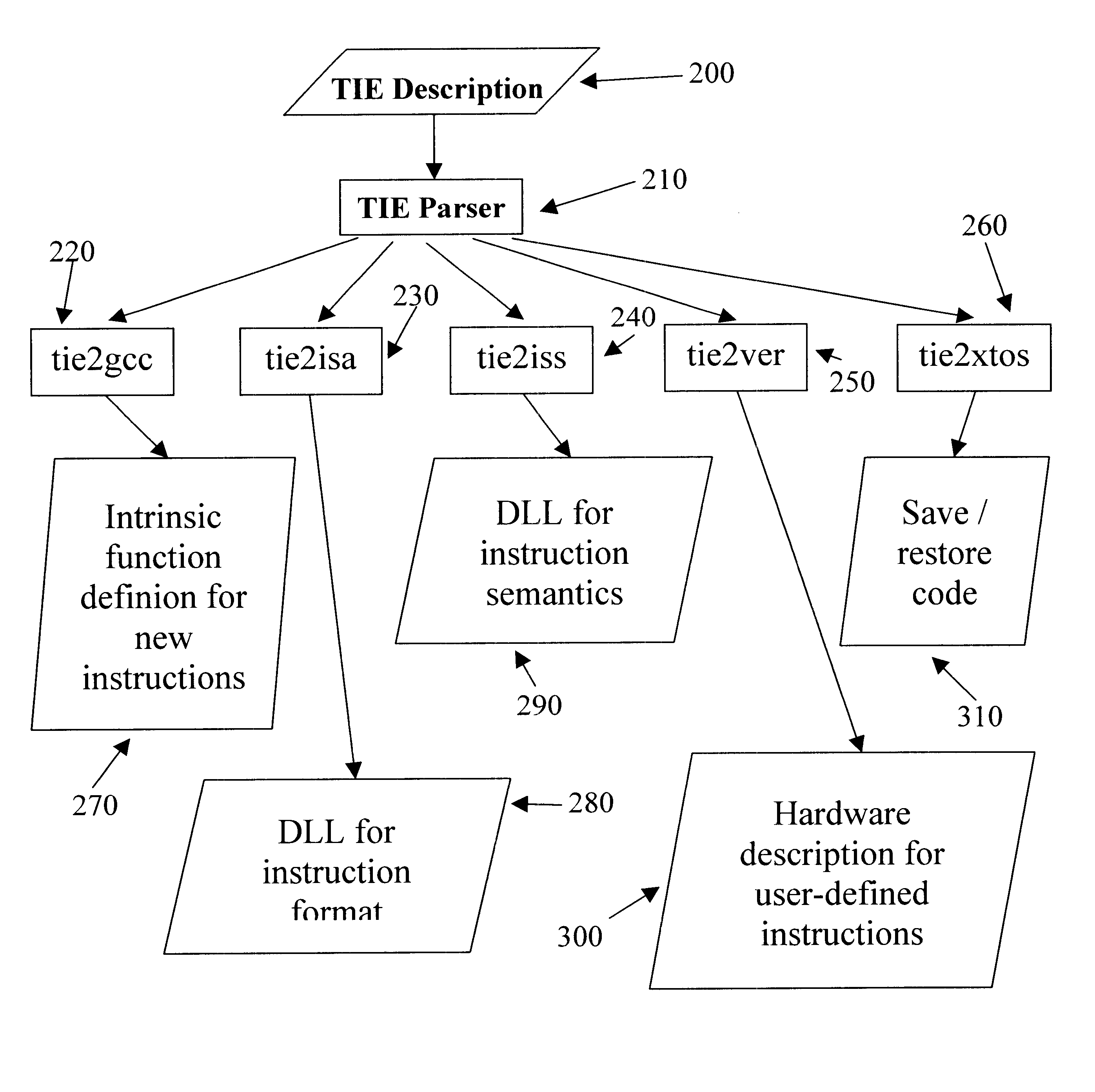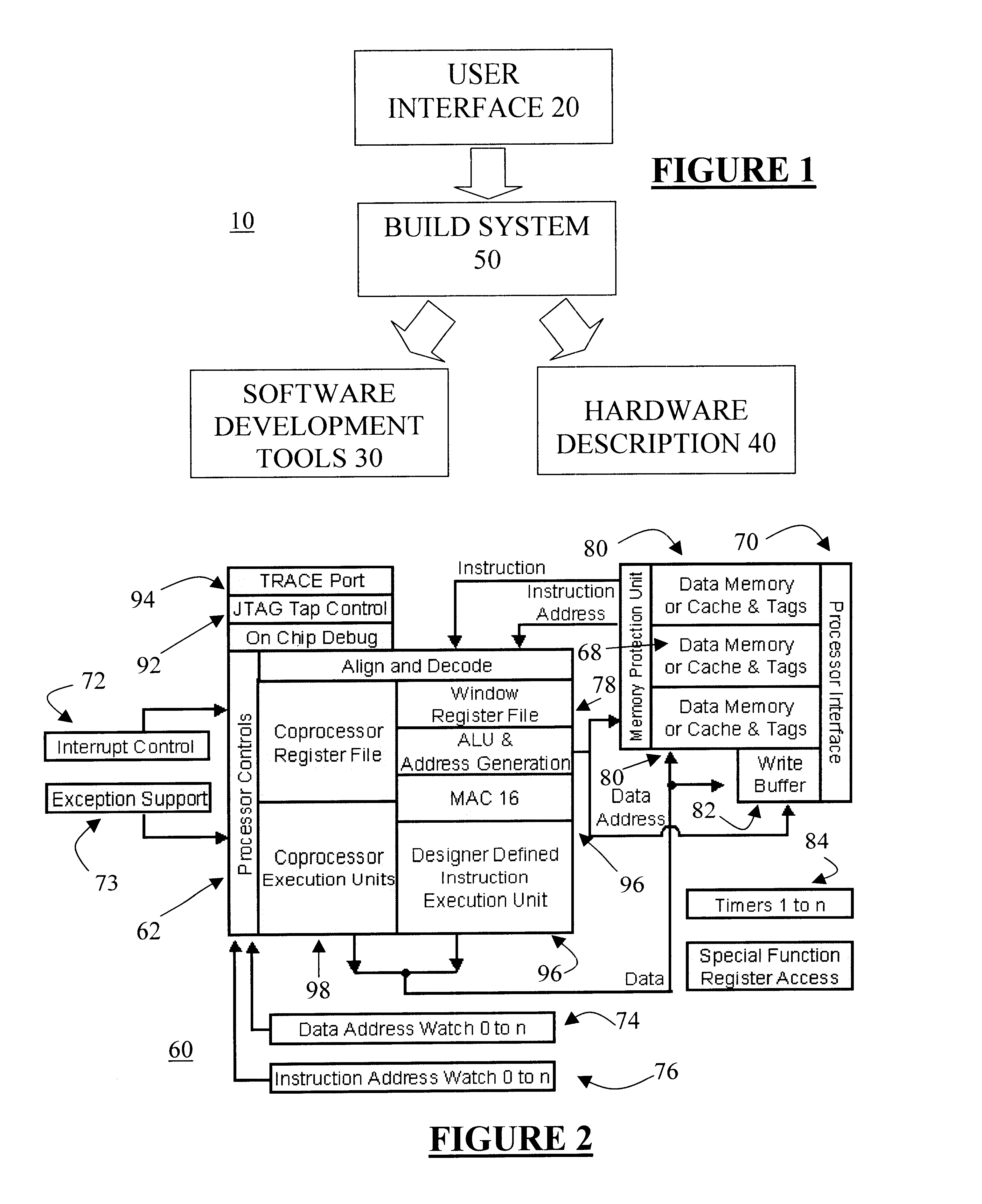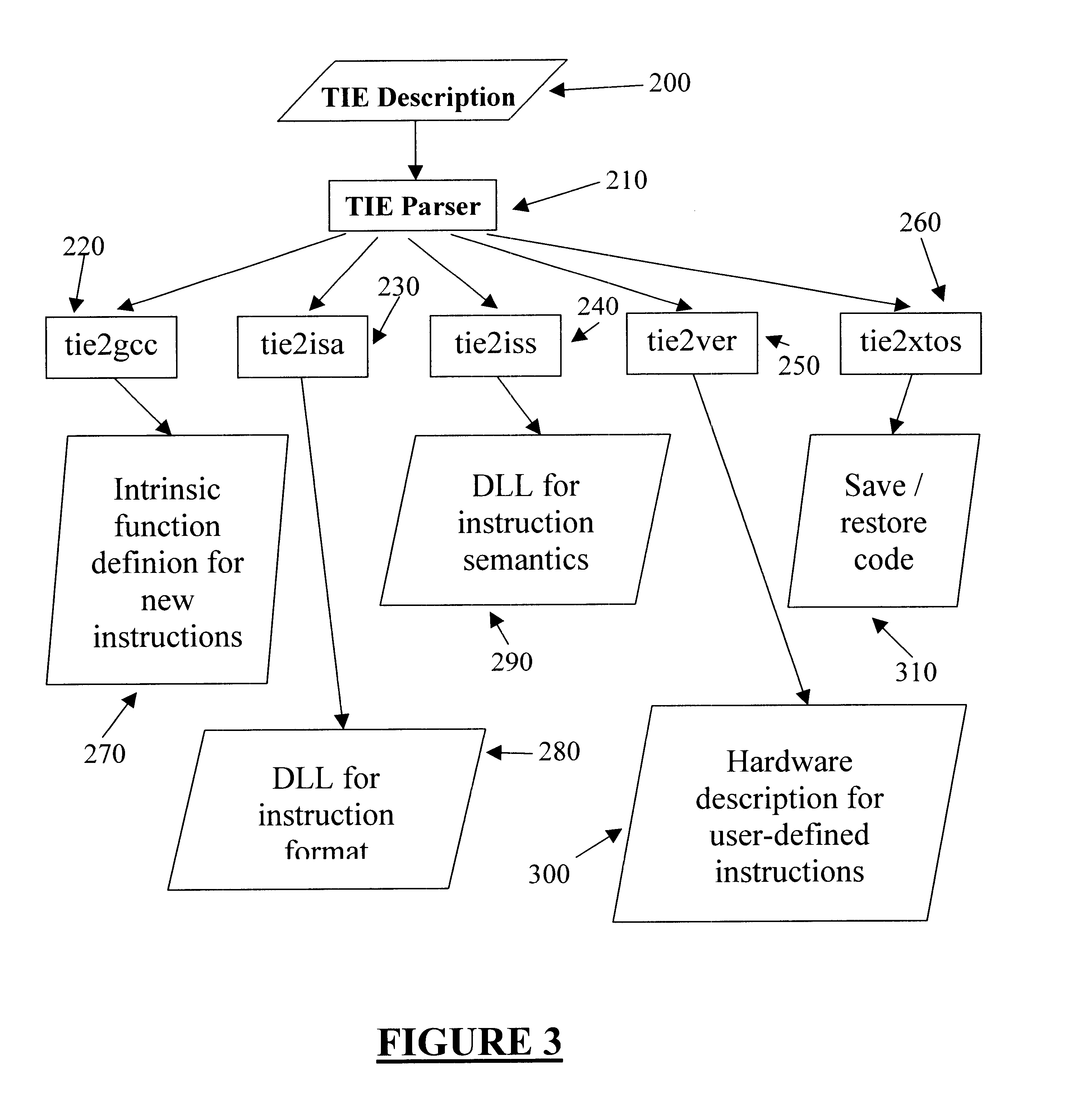Adding complex instruction extensions defined in a standardized language to a microprocessor design to produce a configurable definition of a target instruction set, and hdl description of circuitry necessary to implement the instruction set, and development and verification tools for the instruction set
a microprocessor and instruction extension technology, applied in the field of system and technology for designing programmable processing elements, can solve the problems of difficult design and modification of processors, high risk of even modifying an existing processor design, and inability to meet the requirements of specific applications
- Summary
- Abstract
- Description
- Claims
- Application Information
AI Technical Summary
Benefits of technology
Problems solved by technology
Method used
Image
Examples
Embodiment Construction
An automated processor generation system 10 according to a preferred embodiment of the present invention has four major components as shown in FIG. 1: a user configuration interface 20 through which a user wishing to design a processor enters her configurability and extensibility options and other design constraints; a suite of software development tools 30 which can be customized for a processor designed to the criteria chosen by the user; a parameterized, extensible description of a hardware implementation of the processor 40; and a build system 50 receiving input data from the user interface, generating a customized, synthesizable hardware description of the requested processor, and modifying the software development tools to accommodate the chosen design. Preferably, the build system 50 additionally generates diagnostic tools to verify the hardware and software designs and an estimator to estimate hardware and software characteristics.
The above components are preferably similar ...
PUM
 Login to View More
Login to View More Abstract
Description
Claims
Application Information
 Login to View More
Login to View More - R&D
- Intellectual Property
- Life Sciences
- Materials
- Tech Scout
- Unparalleled Data Quality
- Higher Quality Content
- 60% Fewer Hallucinations
Browse by: Latest US Patents, China's latest patents, Technical Efficacy Thesaurus, Application Domain, Technology Topic, Popular Technical Reports.
© 2025 PatSnap. All rights reserved.Legal|Privacy policy|Modern Slavery Act Transparency Statement|Sitemap|About US| Contact US: help@patsnap.com



